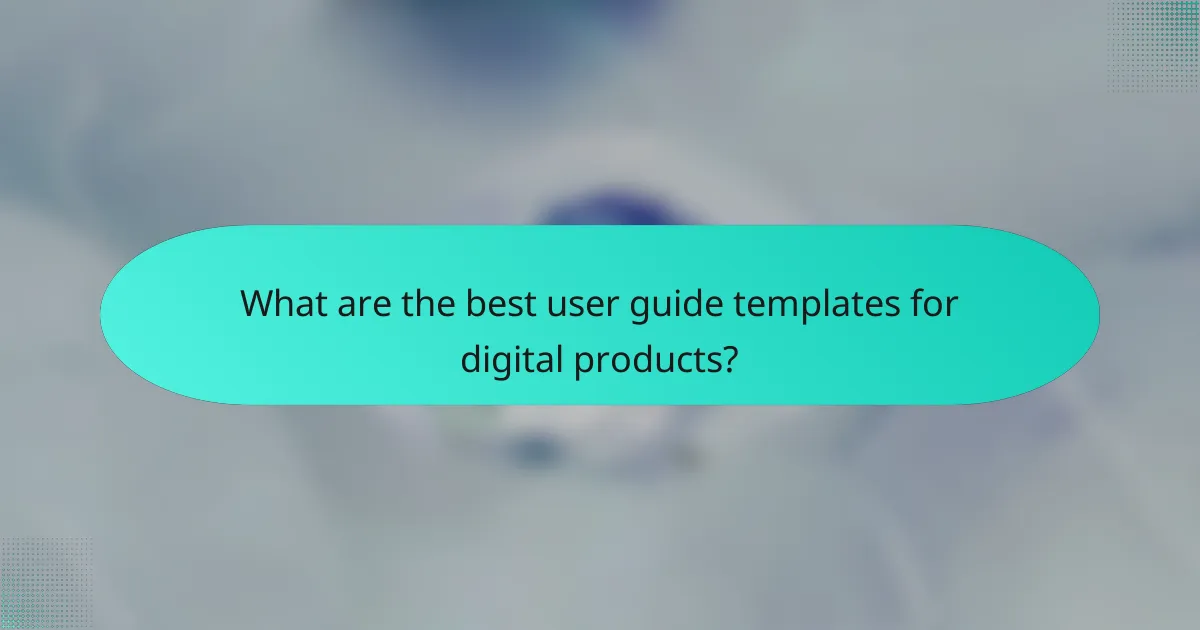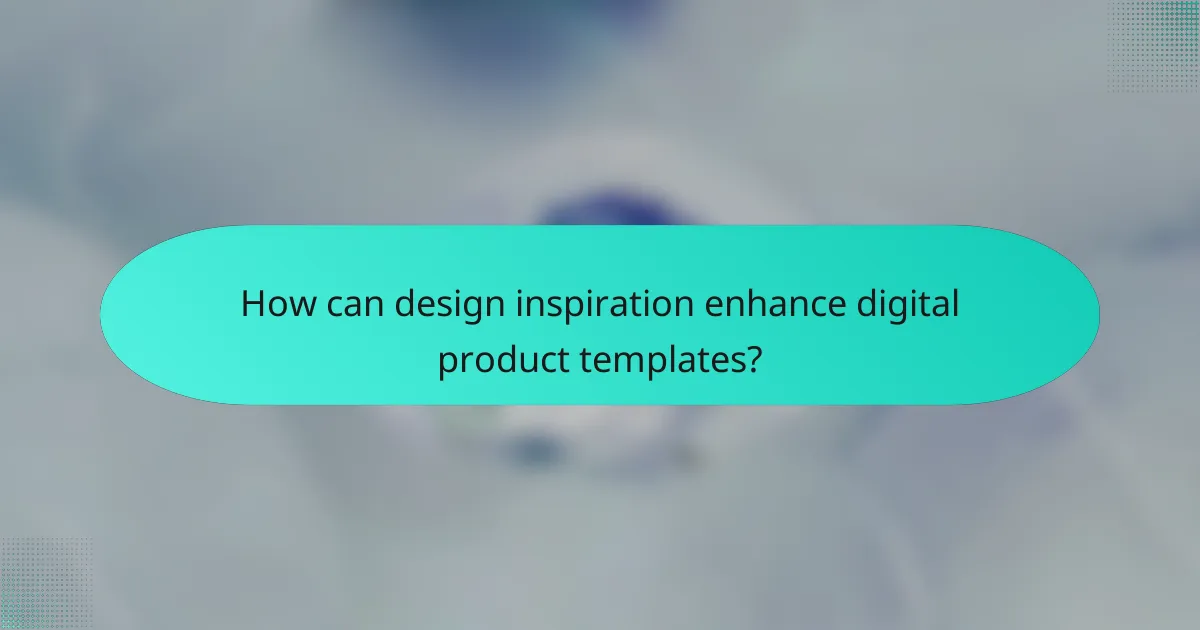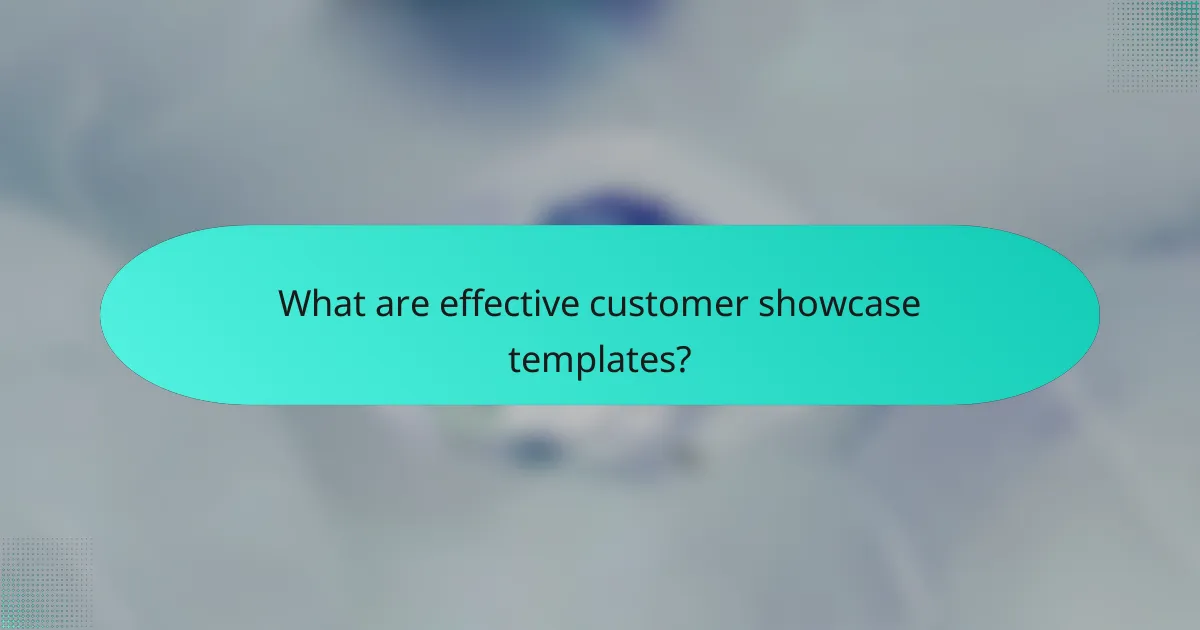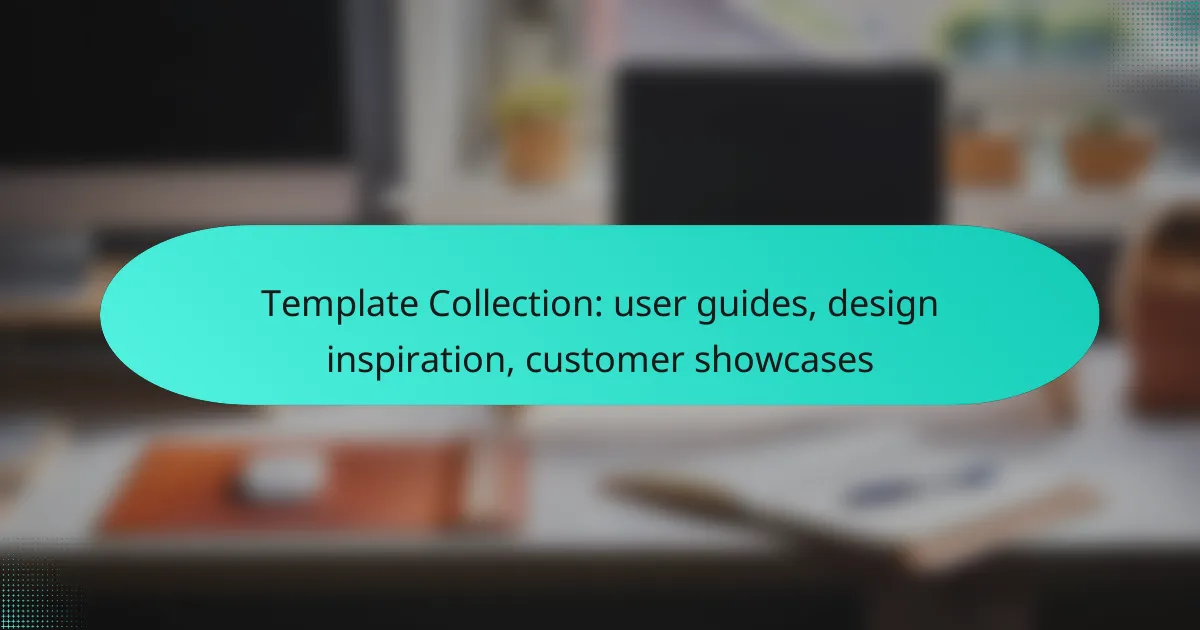Explore our comprehensive collection of templates designed to enhance user guides, inspire design, and showcase customer success stories. Each template is crafted to provide clear instructions, fresh visual ideas, and compelling narratives that resonate with your audience. Whether you’re looking to improve user experience or highlight achievements, our templates are adaptable and tailored to meet diverse needs.

What are the best user guide templates for digital products?
The best user guide templates for digital products are structured documents that provide clear instructions and support for users. These templates should be adaptable to various digital formats and tailored to the specific needs of the product and its audience.
Template for software user manuals
A software user manual template typically includes sections like installation instructions, system requirements, and troubleshooting tips. It should be organized logically, often starting with an overview and moving through detailed functionalities.
Consider using a table of contents for easy navigation and including screenshots to illustrate steps. Ensure that the language is user-friendly and avoids technical jargon unless necessary.
Template for mobile app guides
A mobile app guide template should focus on user onboarding, key features, and common tasks. It often includes a step-by-step walkthrough of the app’s main functionalities and tips for optimizing user experience.
Incorporate visuals such as icons and screenshots to enhance understanding. Keep the content concise, as mobile users prefer quick, digestible information.
Template for e-learning platforms
An e-learning platform guide template should outline course navigation, learning objectives, and assessment methods. It is essential to provide clear instructions on how to access materials and submit assignments.
Consider adding a FAQ section to address common learner queries. Use engaging visuals and interactive elements to maintain user interest and facilitate learning.

How can design inspiration enhance digital product templates?
Design inspiration plays a crucial role in enhancing digital product templates by providing fresh ideas and visual direction. It helps creators understand current trends, ensuring that their templates are not only functional but also aesthetically appealing and user-friendly.
Color scheme examples for digital products
Choosing the right color scheme is essential for creating an engaging digital product template. Consider using complementary colors that evoke the desired emotions; for instance, blue and orange can convey trust and energy, respectively. Popular combinations include monochromatic schemes, analogous colors, or triadic palettes that offer balance and contrast.
When selecting colors, aim for accessibility by ensuring sufficient contrast between text and background. Tools like the WebAIM Contrast Checker can help verify that your color choices meet accessibility standards, making your templates usable for a wider audience.
Typography trends in user interface design
Typography significantly impacts the readability and overall aesthetic of digital product templates. Current trends favor clean, sans-serif fonts for body text, while decorative fonts can be used sparingly for headings or calls to action. Popular choices include Google Fonts like Roboto and Open Sans, which are widely available and versatile.
When designing with typography, consider the hierarchy of information. Use varying font sizes and weights to guide users through the content, ensuring that the most important information stands out. Additionally, maintain a consistent font pairing throughout the template to create a cohesive look.

What are effective customer showcase templates?
Effective customer showcase templates highlight success stories and user experiences, demonstrating the value of products or services. These templates should be structured to clearly communicate the customer’s journey, the challenges faced, and the solutions provided, making it easy for potential clients to relate and engage.
Case study template for digital services
A case study template for digital services outlines the process and results of a specific project. It typically includes sections such as the client’s background, the challenges they faced, the solutions implemented, and measurable outcomes. This format allows potential customers to see real-world applications and benefits of the services offered.
When creating a case study, focus on clarity and conciseness. Use bullet points for key achievements and include visuals like graphs or screenshots to illustrate results. Aim for a length of one to three pages, ensuring it is detailed enough to inform but concise enough to maintain interest.
Template for user testimonials
A template for user testimonials captures the voices of satisfied customers, showcasing their experiences and satisfaction with a product or service. It should include the customer’s name, position, and company, along with a brief narrative of their experience, emphasizing specific benefits and outcomes.
To enhance credibility, consider including a photo of the customer and their company logo. Keep testimonials short, ideally between 50 to 150 words, focusing on impactful statements that resonate with potential clients. Encourage customers to highlight unique features or exceptional service that made a difference in their experience.

What criteria should I consider when choosing a template?
When selecting a template, consider factors such as customization options, compatibility with design tools, and the specific needs of your project. A well-chosen template should align with your design goals while being flexible enough to accommodate changes.
Customization options
Customization options are crucial when choosing a template, as they determine how much you can modify the design to fit your brand. Look for templates that allow changes in colors, fonts, layouts, and images without extensive coding knowledge.
Some templates offer drag-and-drop functionality, making it easier to personalize your design. Consider whether you need advanced features like custom CSS or JavaScript support, especially for more complex projects.
Compatibility with design tools
Ensure the template is compatible with the design tools you plan to use, such as Adobe Creative Suite, Sketch, or Figma. This compatibility can significantly streamline your workflow and reduce the time spent on adjustments.
Check if the template supports popular file formats like PSD or AI, which can enhance collaboration with designers. Additionally, verify that it integrates well with any content management systems (CMS) you may be using, such as WordPress or Shopify.

How do I create a cohesive template collection?
To create a cohesive template collection, focus on organizing templates logically and ensuring they reflect a unified brand identity. This involves categorizing templates effectively and maintaining consistent design elements across all templates.
Organizing templates by category
Organizing templates by category helps users find what they need quickly and efficiently. Common categories might include user guides, design inspiration, and customer showcases. Consider using a clear labeling system and intuitive navigation to enhance accessibility.
When categorizing, think about the specific needs of your audience. For instance, if your templates are for marketing purposes, you might create subcategories like social media, email campaigns, and print materials. This approach allows users to locate relevant templates without unnecessary searching.
Maintaining brand consistency across templates
Maintaining brand consistency across templates is crucial for creating a professional appearance. Ensure that all templates use the same color palette, fonts, and logo placements. This uniformity reinforces brand recognition and builds trust with users.
To achieve consistency, develop a style guide that outlines design elements and usage rules. Regularly review templates to ensure they adhere to this guide and update them as necessary. Avoid using overly diverse styles that can confuse users or dilute your brand identity.

What are emerging trends in template design for 2024?
In 2024, template design is increasingly influenced by advancements in technology and a growing emphasis on inclusivity. Key trends include the integration of artificial intelligence and a strong focus on accessibility, ensuring that templates cater to a wider audience and enhance user experience.
Incorporation of AI in template creation
The use of artificial intelligence in template creation is transforming how designers approach their work. AI tools can automate repetitive tasks, generate design suggestions, and optimize layouts based on user behavior, significantly speeding up the design process.
For example, AI-driven platforms can analyze existing templates and suggest improvements or create new designs tailored to specific user needs. This not only enhances creativity but also allows designers to focus on more complex aspects of their projects.
Focus on accessibility in design templates
Accessibility is becoming a crucial aspect of template design, with an emphasis on creating content that is usable by everyone, including individuals with disabilities. Designers are increasingly incorporating features such as screen reader compatibility, keyboard navigation, and color contrast adjustments to meet accessibility standards.
To ensure templates are accessible, consider following guidelines like the Web Content Accessibility Guidelines (WCAG). This includes using clear typography, providing alternative text for images, and ensuring that interactive elements are easily navigable. By prioritizing accessibility, designers can create templates that reach a broader audience and comply with regulations in many regions.
